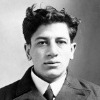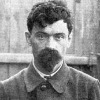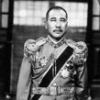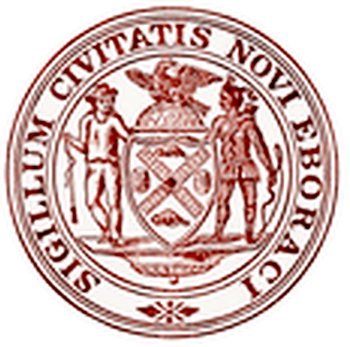
The Commission is the governing body of the American Mafia,[1] formed in 1931. The Commission replaced the "Boss of all Bosses" title with a ruling committee consisting of the New York Five Families bosses and the bosses of the Chicago Outfit and the Buffalo crime family.[1] The last known Commission meeting held with all the bosses was in November 1985.[2]
Pre-Commission
Before the Commission was formed, the American Mafia crime families were under control of one man known as the Capo dei capi ("boss of bosses", literally "head of heads"). This man held great power over all their bosses, leading to disputes and wars.[1]
In 1929, two New York Mafia bosses, Joe "The Boss" Masseria and Salvatore Maranzano, fought over the title in the Castellammarese War. Masseria was murdered on April 15, 1931, allowing Maranzano to assume the title of capo di tutti capi. Maranzano began to divide all the national criminal gangs into several crime families. Charles "Lucky" Luciano and his allies decided that Maranzano would be removed, and he was murdered on September 10, 1931.[1]
The Commission's formation
After Maranzano's murder in 1931, the Mafia families called a meeting in Chicago.[1][3] The purpose of the meeting was to replace the old Sicilian Mafia regime of "boss of all bosses" and establish a rule of consensus among the crime families. Charlie Luciano established a Mafia board of directors to be known as "The Commission" to oversee all Mafia activities in the United States and serve to mediate conflicts between families.[1]The Commission consisted of seven family bosses: the leaders of New York's Five Families: Charlie "Lucky" Luciano, Vincent Mangano, Tommy Gagliano, Joseph Bonanno, and Joe Profaci; Chicago Outfit boss Al Capone; and Buffalo family boss Stefano Magaddino.[1][4] Charlie Luciano was appointed chairman of the Commission. The Commission agreed to hold meetings every five years or when they needed to discuss family problems.[1]
The power of the Commission
FBI chart of American Mafia Bosses across the country in 1963
The Commission held the power of approving a new boss before he could take over officially. The New York Five Families also decided that the names of all new proposed members must be approved by the other families. After the new proposed member was approved by the other families, he could become a made man.[1]
The Commission allowed Jewish mobsters Meyer Lansky, Bugsy Siegel, Louis "Lepke" Buchalter, Dutch Schultz, and Abner "Longie" Zwillman to work alongside them and participate in some meetings.[5] In 1935, Dutch Schultz questioned the Commission's authority when he wanted to have prosecutor Thomas Dewey murdered. Instead, the Commission had Schultz killed on October 23, 1935.[6] The Commission used Louis Buchalter's Murder, Inc.[5] to dispose of any rivals to their authority.[7]
In 1936, Charles "Lucky" Luciano was imprisoned, which allowed bosses Vincent Mangano, Joseph Profaci, Joseph Bonanno, Tommy Gagliano, and Stefano Magaddino to take control of the Commission. The five bosses were all from the "conservative faction" of the commission and believed in Sicilian traditions for the American Mafia. The conservative faction selected Vincent Mangano as the new chairman, and Joseph Prozac became the secretary of the Commission.[8] In 1946, the Havana Conference was arranged by Charles Luciano to discuss with the Commission the American Mafia's future.[9] The Commission decided in the meeting that Luciano would continue to lead the Commission, the American Mafia would become active in the narcotics trade, and Bugsy Siegel would be killed for skimming money from the Flamingo Hotel in Las Vegas.[9]
In 1951, conservative faction leader Vincent Mangano went missing and Albert Anastasia sided with "liberal-American faction" members Frank Costello and Tommy Lucchese. The power of the Commission shifted from the "conservative-Sicilian faction" to the "liberal-American faction".[10]
In 1957, at the Apalachin Meeting, the Commission decided that two more bosses, Angelo "Gentle Don" Bruno of the Philadelphia crime family and Joseph "Joe Z." Zerilli of the Detroit Partnership, would receive a seat on the Commission.[1] Jack Dragna, boss of the Los Angeles crime family for 25 years, also held a seat on the National Commission. Since Dragna's death in 1956, the Los Angeles crime family has been represented by the Chicago Outfit.
The Commission today
The Commission is still reported to exist today, though its current membership is composed of only the bosses of the Five Families and the Chicago Outfit. Its activities have receded from public view as a matter of necessity, like much of the Mafia in general. The five New York City bosses have not met since Paul Castellano was killed in 1985 because of increased law enforcement scrutiny.[2]
Instead of a meeting of bosses, underbosses or captains meet secretly to discuss business and govern.[11]
In October 2017, Domenico Violi of the Luppino crime family in Hamilton, Ontario, Canada was heard to have been named underboss of the Buffalo crime family on wiretaps; this revealed the activity of The Commission as Violi's promotion was so unusual, being the first Canadian to hold the second-highest position in the American Mafia, that Buffalo crime family boss Joseph Todaro Jr. stated he consulted with The Commission for permission to promote him as Buffalo's new underboss.[12]
Historical leadership
Chairman of the Commission
There was no "ruler" of the Commission, but there was a nominated Chairman or Head of the National Commission.[8] This was used as a substitute to the role of capo di tutti capi, as that had the connotations of the old Mustache Pete system of one-man rule.
- 1931–1946 – Charles "Lucky" Luciano[8] – arrested in 1936 and then deported in 1946
- 1946–1951 – Vincent "The Executioner" Mangano[8] – was the "Speaker" of the Conservative faction, disappeared in April 1951
- 1951–1957 – Ruling panel – Frank "the Prime Minister" Costello (Liberal faction), Joseph "Joe Bananas" Bonanno (Conservative faction)[8]
- 1957–1959 – Vito "Don Vitone" Genovese[13] – led the Liberal faction along with Tommy Lucchese and Carlo Gambino; imprisoned in 1959 and died February 14, 1969
- 1959–1976 – Carlo "Don Carlo" Gambino[13] – allied with Tommy Lucchese and retired Frank Costello; died October 15, 1976
- 1976–1985 – Paul "Big Paul" Castellano – murdered on December 16, 1985[14]
- 1985 – after the Commission Case, it was decided that the Commission would no longer meet as a group; instead, Commission members vote and send messengers to other family bosses relating to Commission topics[2]
- Unofficial 1986–1992 – John "Dapper Don" Gotti – imprisoned in 1992 and died on June 10, 2002
- Official 1985–1997 – Vincent "Chin" Gigante[15] – imprisoned in 1997 and died December 19, 2005
- Unofficial 2000–2003 – Joseph "Big Joey" Massino – imprisoned in 2003, then in 2004 became a government witness
Families with Commission seats
- Genovese (1931–present)[16]
- Gambino (1931–present)[16]
- Lucchese (1931–present)[16]
- Chicago Outfit (1931–present), often represented by the Genovese family[16]
- Bonanno (1931–1970s;[16] 1990s–present)
- Colombo (1931–1990s;[16] 2000s–present)
Families represented by the Genovese family
- Buffalo crime family – held a seat from 1931 to 1974[16]
- Philadelphia crime family – held a seat from 1961 to 1980[1][16]
- Detroit Partnership – held a seat from 1961 to 1977[16]
- DeCavalcante crime family (New Jersey)[16]
- Patriarca crime family (New England)[16]
- Pittsburgh crime family[1][16]
- Cleveland crime family[1][16]
- New Orleans crime family[16]
Families represented by the Chicago Outfit
- Milwaukee crime family[1][16]
- Kansas City crime family[16]
- St. Louis crime family[16]
- Trafficante crime family (Tampa)[16]
- Los Angeles crime family[1][16]
- San Francisco crime family[1]
- San Jose crime family[1
References
Notes
- Capcei, Jerry. The complete idiot's guide to the Mafia "The Mafia's Commission" (pp. 31–46)
- 2013-07-17
- Humbert S. Nelli The business of crime: Italians and syndicate crime in the United States (pp. 206–208)
- The Commission's Origins (November 20, 1986) The New York Times
- Russo, Gus. The Outfit: The Role of Chicago's Underworld in the Shaping of Modern America pp. 32–33, 41 221
- Raab, Selwyn. Five Families: The Rise, Decline, and Resurgence of America's Most Powerful Mafia Empires p. 49
- Killer Ring Broken; 21 Murders Solved laborers.org (1998)
- Bonanno A Man of Honor (pp. 159–169)
- Havana Conference (Dec. 1946) lacndb.com
- Bonanno A Man of Honor pp. 170–185
- "After Gotti, Mafia ordered to clean house" New York Daily News. July 7, 2002
- 2018-12-04
- Gambino Is Called Heir to Genovese As 'Boss of Bosses'; Gambino Called 'Boss of Bosses' Of 6 Mafia Families in the Area by Charles Grutzner (March 15, 1970) New York Times
- Books of The Times; A Don Pays the Price of Carelessness by Christopher Lehmann-Haupt (May 23, 1991) The New York Times
- "With Gotti Away, the Genoveses Succeed the Leaderless Gambinos" by Selwyn Raab (September 3, 1995) The New York Times
- 2011-04-13
Sources
- Bonanno, Joseph. A Man of Honor: The Autobiography of Joseph Bonanno. New York: St. Martin's Press, 2003. ISBN 0-312-97923-1
- Bernstein, Lee. The Greatest Menace: Organized Crime in Cold War America. Boston: UMass Press, 2002. ISBN 1-55849-345-X
- Bonanno, Bill. Bound by Honor: A Mafioso's Story. New York: St. Martin's Press, 1999. ISBN 0-312-97147-8
 Content from Wikipedia licensed under CC-BY-SA.
Content from Wikipedia licensed under CC-BY-SA.









































